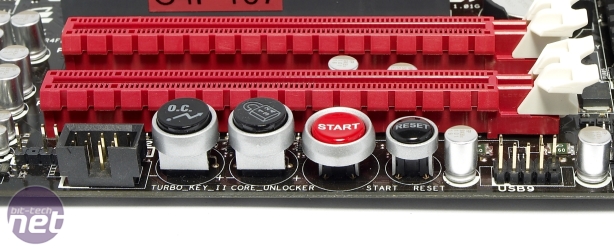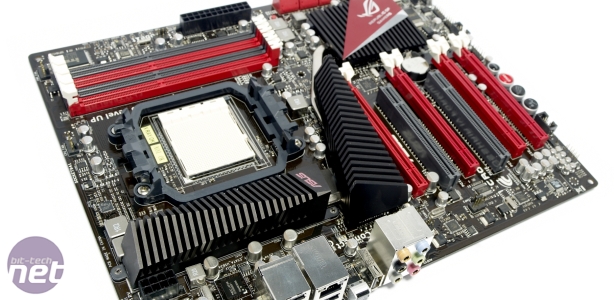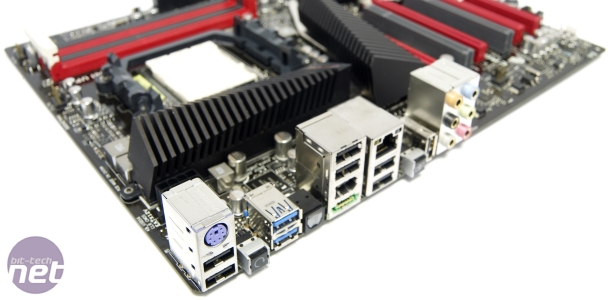
Auto-Overclocking Features
Toward the lower edge of the board are four buttons: Start, Reset, Core Unlocker and Turbo_Key_II. The first two are self-explanatory, while the third aims to unlock disabled cores of your CPU. However, the button is redundant, as you can do the same by hitting ‘4’ when prompted to during POST, or via the BIOS.The fourth button is an automatic overclocking button – hit this to activate Turbo Key II. Asus says that you can set three different levels of auto-overclock – fast, extreme and custom (which lets you set limits on the overclock) – but we couldn’t work out how to do this even after talking to Asus. As well as the CPU Level Up feature of the BIOS, there’s also the TurboV software that also automatically overclocks your CPU – that’s a whole load of different automatic overclocking methods to choose from.
The only two truly gamer-focused additions to the C4F are the GameFirst technology and the SupremeFX X-Fi emulation software. The former provides quality of service (QoS) over the Marvell-powered Gigabit Ethernet connection, while the latter brings the usual CMSS 3D, Crystalizer and EAX 4 support of on-board X-Fi audio codecs.
Storage and Other Connections
As expected of a premium board, the six main SATA 6Gbps ports are rotated so that the cables sit flush with your case. A seventh SATA port (coloured black) sits nearby, but as it’s SATA 3Gbps and sits perpendicular to the PCB, it’s worth avoiding. The board has five 4-pin fan headers scattered around its edges, so those with high-airflow cases will be well served.However, the six USB 2 looks a touch lightweight if you’ve got a USB mouse, keyboard, headset and gamepad connected. One of the USB ports doubles as powered eSATA port. The pair of USB 3 ports are backwards compatible though, should you run out, and there are three headers on the board to add six more USB 2 ports.
Why this board has FireWire is beyond us though – no game-related peripheral will use them. As well as the CMOS Clear and ROG Connect buttons, there’s the usual six analogue audio outputs as well as an optical S/PDIF output. In the box is a bracket to add two USB 2 ports and another eSATA, plus two SATA 6Gbps cables, four SATA 3Gbps, seven cable ties, some stickers to label your disk and drive cables and a large case sticker that looks like blood-soaked projectile vomit.

MSI MPG Velox 100R Chassis Review
October 14 2021 | 15:04











Want to comment? Please log in.